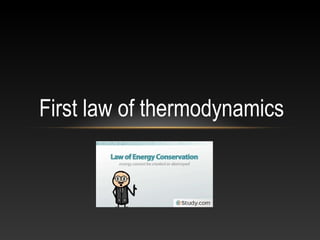The First Law of Thermodynamics states that heat is a form of energy and that the total energy of an isolated system remains constant over time. Heat can be transferred between objects and transformed into other forms of energy, like work, but cannot be created or destroyed. The First Law is a quantitative expression of the law of conservation of energy and is commonly used to analyze heat engines, which convert heat into mechanical work. Common examples of heat engines are internal combustion engines, air conditioners, refrigerators, and heat pumps.









